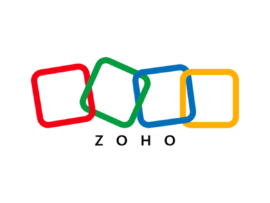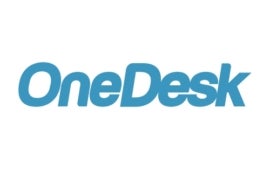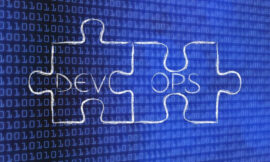Project management software has increasingly become an integral part of a successful organization, especially as companies began supplementing in-person work with remote working environments. Project management systems keep all employees in sync on tasks in a software development environment and ensure that project deadlines are met and that end customer expectations can be achieved more efficiently.
SEE: The 10 best project management software and tools for 2023 (TechRepublic)
Jump to:
Top ticketing system comparison
In this article, we’ll cover the top seven PM ticketing systems, their features, pros, cons and their pricing. We will also explore the benefits of PM ticketing systems and discuss how to select these systems.
| Feature | Teamwork | Smartsheet | Zoho Projects | Basecamp | Jira | Asana | monday.com | Wrike | Onedesk | Freshservice |
|---|---|---|---|---|---|---|---|---|---|---|
| Customizable workflows | Yes, via Teamwork | Yes | Yes | No | Yes | Yes | Yes | Yes | Yes | Yes |
| Free guest viewers | No | Yes | Yes | Yes | No | Yes | Yes | Yes | Yes | Yes |
| Reporting features | Yes | Yes | Yes | No | Yes | Yes | Yes | Yes | Yes | Yes |
| Built-in automation | Yes | Yes | Yes | No | Yes | Yes | Yes | Yes | Yes | Yes |
| External intake forms | Yes, via Teamwork | Yes | Yes, via Zoho Forms | No | Yes | Yes | Yes | Yes | Yes | Yes |
| Built-in Agile | Yes | Yes | Yes, via Zoho Sprints | No | Yes | No | No | Yes | Yes | No |
| Storage | 50GB in Teamwork | 20GB of attachment storage in Pro | 5GB in Free | 500 GB | 2GB for the free plan, 250GB for paid plans | Unlimited (100MG file limit) | 5GB | 2GB for the free plan | n/a | n/a |
| Pricing | $8.50 per user, per month, annually | $7 per user, per month, annually | $4 per user, per month, annually | $99 per month | Starts at $7.50 per user per month | Starts at $10.99 per user per month | Starts at $8 per user per month | Starts at $9.80 per user per month | $11.99 per user per month when billed annually | Starts at $19 per agent per month |
Featured partners
Teamwork Desk: Best for the most ticketing features

Teamwork offers ticket management software called Desk, that perfectly integrates with their project management and CRM software. You can manage projects, client information and incoming tickets in one tech stack.
Pricing
Subscriptions in Desk are not the same as those in Teamwork. They don’t have a free plan, but do have fair pricing for the amount of features and integrations in each plan.
- Starter: $8.50 per user, per month, billed annually, or $10.50 billed monthly.
- Pro: $15 per user, per month, billed annually, or $18.75 billed monthly.
- Premium: $29.50 per user, per month, billed annually, or $36.75 billed monthly.
- Enterprise has custom pricing and is good for teams that want more data security.
Features
- Email ticketing and smart inboxes.
- Ability to merge, split, add followers and private notes to tickets.
- Notifications and notification history.
- Templates and canned responses.
- Reporting and performance analytics.
- Backup for all user databases.
Pros
- Teamwork and Teamwork CRM integration in all plans.
- Majority of ticketing features in all plans.
- Custom domain for hosting help documentation for customers.
- Encryption and password protection in all plans.
- Phone, chat and email support in all subscriptions.
Cons
- Time tracking only in Pro plan and up.
- HIPAA compliance only in Enterprise.
For more information on Teamwork project management, read the full Teamwork review.
Smartsheet: Best for complex projects

Smartsheets is a project management solution best suited for extensive data needs. Teams can enter their information in spreadsheets or templates to get started and visualize their projects in different views. For ticket tracking, they have some templates available for tracking requests in your projects.
Pricing
Smartsheet offers pricing that can be high depending on how many features you need, but they do have a free plan to help teams explore the software before making any costly commitments.
- Free: Allows 1 user, and up to 2 editors.
- Pro: $7 per user, per month, billed annually, or $9 billed monthly.
- Business: $25 per user, per month, billed annually, or $32 billed monthly.
- Enterprise has custom pricing and scales to your team’s needs.
Features
- Multiple work views like grid, Gantt, calendar, card (kanban) and dashboards.
- Unlimited reporting and forms.
- Templates and access to a document builder.
- Integrations with Google and Microsoft work applications.
- No-code app building to personalize tools to your workflow.
- Workflow automation for spreadsheets in all plans.
Pros
- Form template for help desk ticket tracking.
- Template set for ticketing IT requests.
- Unlimited viewers and editors in Business and Enterprise.
- Custom branding for Business and Enterprise.
Cons
- Cost of higher tier plans can be costly for small teams.
- Limited support in most plans.
- Welcome and help screens only in Enterprise.
For more information, read the full Smartsheet review.
Zoho Projects: Best for upgrading your tech stack

The Zoho platform provides teams with a suite of affordable business solutions. Zoho Projects has project management capabilities for task management, time tracking, automation and reporting. You can combine their software with their integration with Zoho Desk, which is a ticket management system.
Pricing
Zoho offers very simple pricing tiers at competitive rates for teams of all sizes. Although their free plan is lacking, their paid plans start at $4-5 per user, per month.
- Free: Offers 3 users, 2 projects, and 5GB of storage.
- Premium: $4 per user, per month, billed annually, or $5 billed monthly.
- Enterprise: $9 per user, per month, billed annually, or $10 billed monthly.
Features
- Work views like Gantt charts, list and kanban.
- Offers integrations with Zoho Books, Zoho Invoice, Zoho Analytics and Zoho CRM.
- Integrations with outside apps like Zapier, Slack, GitHub and Microsoft Office 365.
- Issue tracking to stay on top of problems.
- Great storage starts at 5GB for Free and jumps to 100GB for Premium.
Pros
- integrates with Zoho Desk or Zendesk for help desk functionality.
- Project budget management.
- Time management features.
- Custom domain in Enterprise plan.
Cons
- No project exporting in Free plan, and only allow up to 2 projects.
- Most Zoho applications require extra time to ease through the learning curve.
For more information, read the full Zoho Projects review.
Basecamp: Best for large teams with simple projects

Basecamp is an online project management software with a ticketing system that aims to keep all important project documentation, tasks, work schedules and communication in one place where they can be cross-linked, searched and organized for your team to consume as needed.
Projects can be created to house tasks and documentation, and tasks can be broken down into neatly organized lists and assigned out individually along with notes and communication around particular items. Notes help keep track of where along the timeline the task currently resides. Basecamp features mobile applications as well as browser access.
Pricing
- Basecamp: $15 per user per month.
- Basecamp Pro Unlimited: Unlimited users at $299 per month, billed annually.
Features
- To-dos to track work, responsibilities, tasks, details, deadlines and progress.
- Messages and group chat to ensure big discussions as well as real-time group communications are handled efficiently.
- Seamless collaboration grants access to anyone in your Basecamp account to view and join projects.
- Card Table is Basecamp’s take on kanban that focuses specifically on reactive work.
Pros
- Basecamp is suitable for roles that involve both technical and non-technical departments in an organization.
- Notoriously easy-to-use interface ensures most users can comfortably navigate it with ease, making Basecamp a popular choice for designers.
- Basecamp offers integrations with various compatible third-party tools.
Cons
- Basecamp and its interface aren’t very customizable.
- If your organization requires more communication tools, task management or integration with third-party tools than Basecamp’s main offering, it may not be the tool you want.
- Basecamp doesn’t provide the ability to reference ticket numbers and reporting for management.
For more information, read the full Basecamp review.
JIRA: Best for software development teams

JIRA is one of the standard project management platforms used across the software engineering industry, having been around for a little over 20 years. JIRA is also an impressive project management ticketing system.
SEE: The 10 best agile project management software for 2023 (TechRepublic)
JIRA’s power for software engineering teams shines when you integrate it with other Atlassian products, like Confluence, as it is able to document software and services your organization maintains or automatically close tickets when pull requests are merged in GitHub or BitBucket.
Pricing
- Free: $0 for up to 10 users.
- Standard: Estimated at $7.75 per user per month.
- Premium: Estimated at $15.25 per user per month.
- Enterprise: Billed annually. Contact sales to receive a custom quote.
Features
- Basics of good ticketing systems, including out-of-the-box Agile support, support for reports for management, time management and tracking, team collaboration and more.
- An extensive library of third-party integrations for added functionality and an application programming interface to allow custom integrations for your organization.
- Collaboration through the use of ticket numbers, descriptions, comments and more, which can be easily achieved both in person and in remote environments.
- Storage for files and time estimates inside of tickets. JIRA can maintain a backlog of tickets that future sprints can pull from to create a new sprint, which is a powerful feature that some project management solutions do not offer.
Pros
- JIRA lets you easily remap your data into different views, whether you’re used to a kanban view or want a scrum board or Gantt chart.
- JIRA offers powerful integration with other Atlassian products.
Con
- Graphic designers, accounting teams and business development teams might find the user interface grating and confusing compared to other tools.
For more information, read the full JIRA review.
Asana: best for company growth

Asana is a popular project management system for all types of businesses. It allows for task management, collaboration, documentation management and workflow management all in a single platform that’s easy to use and maintain and is approachable for every business unit regardless of their technical skills and abilities.
Asana, as a project management ticketing system, features a workflow builder that lets users customize exactly the flow tickets take; even allowing them to build a public-facing form for the intake of information for ticketing. Tickets can be further organized and acted on through automation, and the system even integrates with third-party tools to act on tickets ingested through an automated flow.
This power can be added to other platforms, but it often relies on additional tools, costs and overhead associated with maintaining these connections to perform the same work that can be achieved with Asana’s workflow builder.
Pricing
- Basic: Free forever.
- Premium: $10.99 per user, per month, billed annually, or $13.49 billed monthly.
- Business: $24.99 per user, per month, billed annually, or $30.49 billed monthly.
Features
- Workflow builder enables users to coordinate work more smoothly and efficiently across teams from a single place.
- Backlog feature that can store tickets that aren’t ready to be worked on and ensures they won’t get lost and can be pulled into a future project.
- App integrations featuring more than 200 apps, Asana APIs for building custom apps, unlimited file storage and more.
Pros
- While Asana doesn’t strictly conform to Agile principles, it does offer the ability to use them in an Agile manner.
- Asana offers powerful automation tools and effective workflow builders.
- Users can choose how to visualize data within the system: Switch between kanban boards, Gantt charts, lists, calendars and more.
Cons
- Some users report that Asana has a steep learning curve.
- User experience is reported as clunky and frustrating, especially when dealing with product licenses.
For more information, read the full Asana review.
Wrike: Best for improving and tracking performance

Wrike is a popular project management tool that enables various teams and organizations to collaborate and create day in and day out, thus raising the effectiveness and productivity of teams while lowering complexity. The project management ticketing system enables its users to link their project progress with real-time results while delivering impressive visual presentation options for this progress.
Wrike delivers various features to enable teams to initiate and structure work, collaborate, carry out reporting and analysis, implement integrations and automations and manage their workspaces.
Pricing
- Free: $0 per user per month.
- Team: $9.80 per user per month.
- Business: $24.80 per user per month.
- Enterprise: Contact Wrike for pricing information.
- Pinnacle: Contact Wrike for pricing information.
Features
- Wrike Integrate enables Wrike customers to connect with an unlimited number of applications. Wrike is also integrated with more than 400 applications.
- Automations are available for users to automate recurring workflows, lower manual errors and reduce tedious processes.
- Premade templates enable users to easily organize, manage and track IT tickets.
- Gantt charts visualize work in an interactive timeline view.
Pros
- With neither coding nor complex configuration needed, Wrike is easy to use.
- Wrike is flexible and fully customizable; users can customize workflows, views, fields and more.
- High scalability ensures Wrike is as effective serving thousands of team members as it is when serving a handful of members.
Cons
- Multiple users have complained about the user interface and general user experience being unintuitive, clunky and sometimes complex.
- Wrike is more pricey than some of its alternatives.
For more information, read the full Wrike review.
OneDesk: Best for help centers

OneDesk is a single platform that combines both help desk and project management to present a highly-customizable solution that delivers users from the practices of switching between, buying, learning and integrating different applications.
Users can create, plan, track and share their projects. They can also use this project management ticketing system to model Gantt charts to develop links between tasks and visually compare their project plans to ongoing work. Other capabilities the platform provides include resource management, reporting, time tracking, real-time task and issue tracking and more.
Pricing
- Standard: $11.99 per user, per month, billed annually, or $13.99 billed monthly.
- Premium: $13.99 per user, per month, billed annually, or $15.99 billed monthly.
- Enterprise: $15.99 per user, per month, billed annually, or $18.99 billed monthly.
Features
- Project collaboration with teams through shared tickets and tasks.
- Merging feature to combine two or more tickets into one and simplify their work, and a subtasks feature to divide complex tickets into smaller and simpler tasks.
- Combined view for tickets and tasks for viewing both tickets and tasks together.
- Auto-triage to create automatic routing rules for tickets, tasks and projects.
Pros
- Ticketing system that allows you to centralize the syncing of workflows to tickets for tracking fresh project requests and enhancement of customer engagement response.
- Flexible user-friendly project management tool.
- Delivers solutions for both project management and help desk.
- Complete access to all features in all OneDesk plans.
Cons
- Customization and the user interface could be improved.
- Not as effective for larger enterprises as it is for small and midsize businesses.
Freshservice: Best for project automation

Freshservice is one of a line of products offered by Freshworks that delivers IT project and service management with IT ticketing software that features automation and artificial intelligence. This delivers a service and project management ticketing system that helps its users modernize their IT service management through AI and automation capabilities while ensuring its project management approach is streamlined for modern IT teams.
SEE: Best IT asset management software for 2023 (TechRepublic)
Freshservice ultimately unites project management and IT service management to produce consistent business outcomes. In addition to project management, it is an ideal system for automation and asset management.
Pricing
- Starter: $19 per agent per month, billed annually, or $29 per agent per month billed monthly.
- Growth: $49 per agent per month, billed annually, or $59 per agent per month billed monthly.
- Pro: $95 per agent per month, billed annually, or $115 per agent per month billed monthly.
- Enterprise: $119 per agent per month, billed annually, or $145 per agent per month billed monthly.
Features
- Automated management of service-level agreement violations as tickets can be escalated automatically or notifications can be manually sent to adhere to user ticket priorities.
- Ability to create new projects from scratch or from tickets to help users plan their IT project initiatives.
- Automatic ticket creation to streamline processes such as onboarding.
Pros
- Auto-assign features make it possible to automatically assign tickets to groups or agents.
- Intuitive UI with simple integration with other businesses and IT systems.
- Native integrations with multiple popular cloud services.
Cons
- Freshservice’s user portal has limited customization functionality.
- There is room for improvement in its asset reporting.
For more information, read the full Freshservice review.
What is a PM ticketing system?
A project management ticketing system allows project managers to break tasks down into sprints, clearly delineate tasks for software engineering or other business divisions, and track the progress of a project, deadlines and what work is outstanding to help manage client expectations, needs, and features and bug fixes.
Some basics of a good project management ticketing system include:
- Team collaboration.
- Ability to track sprints or other planning and scheduling features.
- Reporting for individual teams and broader scopes.
- Time tracking.
- Project and resource budgeting.
- Agile features.
Third-party integrations that can map ticket progress with other reporting systems, code or content management systems.
At its core, the goal of a project management and ticketing system is to break apart projects into smaller, coherent tasks, assign them to individual team members for completion and track that task as it relates to a larger project (often called a sprint, feature or plan). Most systems can track the time spent by an individual on a task, plus the total time by a team for the larger feature, allowing budgeting and time tracking aspects to the software as well.
What are the benefits of using a ticketing system?
Ticketing systems allow project managers to have more oversight on assigned tasks to see when tasks are nearing completion or overdue and can better help organizations manage client expectations, whether that’s internally or externally. These systems also keep project managers and users on track with their tasks and not veering off to tackle things that aren’t important to the current project at hand.
SEE: Hiring kit: Project manager (TechRepublic Premium)
When a ticketing system is used, you can more accurately capture customer expectations, features and bug reports. Then, the team can relay that information to the appropriate departments in your organization to work on those items without losing context or information needed to diagnose issues the customer is facing.
Some ticketing systems feature a full communication system capable of capturing files, hosting documentation, and even chat or message board features where folks across the organization can collaborate on issues around a particular ticket if it requires action from multiple divisions to accomplish a task.
Using a ticket system that meshes with your organization can ensure work is completed in a timely manner and can help manage client expectations, consolidate information in a centralized place and ensure budgets are hit more effectively.
Which ticketing system should you choose?
For businesses that are focused solely on providing software services or technical services, we recommend JIRA or Zoho Projects. JIRA allows for integration across the entire business, and it offers documentation abilities through its existing products as well as rich integration with GitHub and BitBucket. Zoho Projects also has great software development integrations for those on a tighter budget and bundles of other business software for your team.
Asana is our top pick for organizations looking to get a great project management software with a ticketing system that can grow with their business needs as they add employees or business units and want to maintain an easy to use system. Smartsheet will have more of a learning curve, but it’s great if your team has complex projects that tools like Asana or Wrike can’t handle.
For organizations that are looking for a limited set of project management features, we recommend Basecamp if you need message board tools accompanying it, or monday.com if you’ve already got your own communication set up. Teamwork Desk with Teamwork will help if you want to improve collaboration and communication with a smooth interface.
If your organization seeks an adaptable project management solution with a flexible ticketing tool that evolves with the project management landscape and customer needs, then Wrike is the solution for you.
For the organization whose needs cover both project management and help desk, OneDesk may be suitable since it pairs project management and online HelpDesk software to deliver a project management product with ticketing capabilities. You can get the similar functionality for less with Zoho Projects, but it’s through integrations with Zoho’s suite of software. Those of you looking for one software solution might prefer OneDesk or Freshservice.
Freshservice offers IT project and service management with IT ticketing software that features automation and AI. It is a solid option for not only project management, but also asset management and automation.
Read next: Top project management software for Mac users in 2023 (TechRepublic)
Editor’s note: This article was originally written by Cory Bohon and was later revised by Collins Agesa to reflect the current trends for the best project management ticketing systems.
Methodology
We considered software that could provide the best tools for your team’s productivity as well as collaboration. Some of the software mentioned have ticketing features but aren’t full ticketing systems vehicle, while others are ticketing systems with built-in integration with project management tools.
Source of Article



